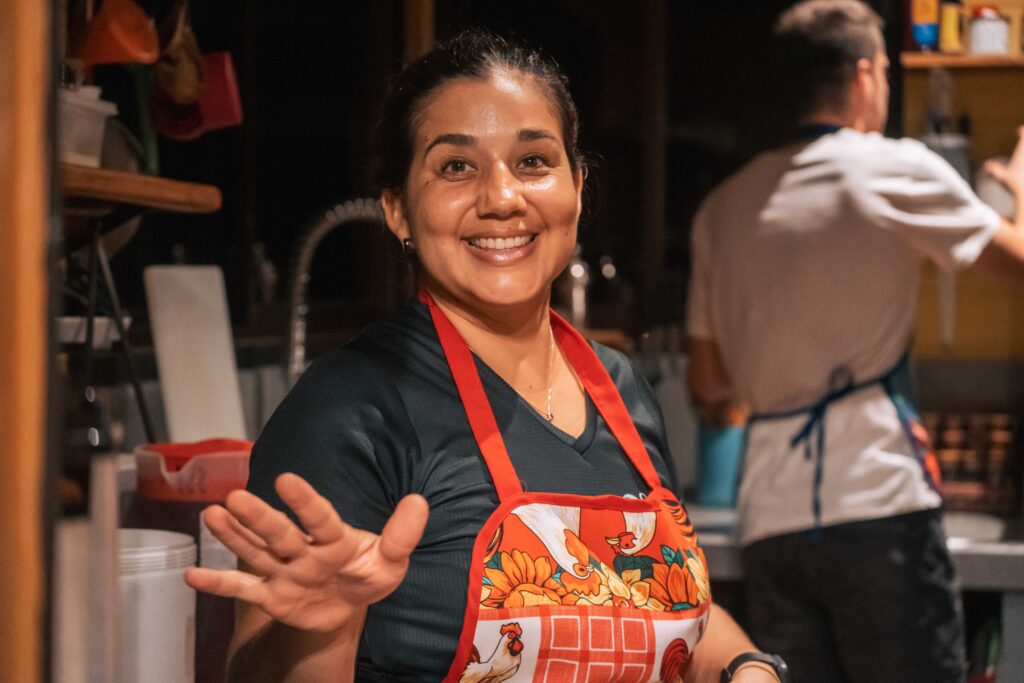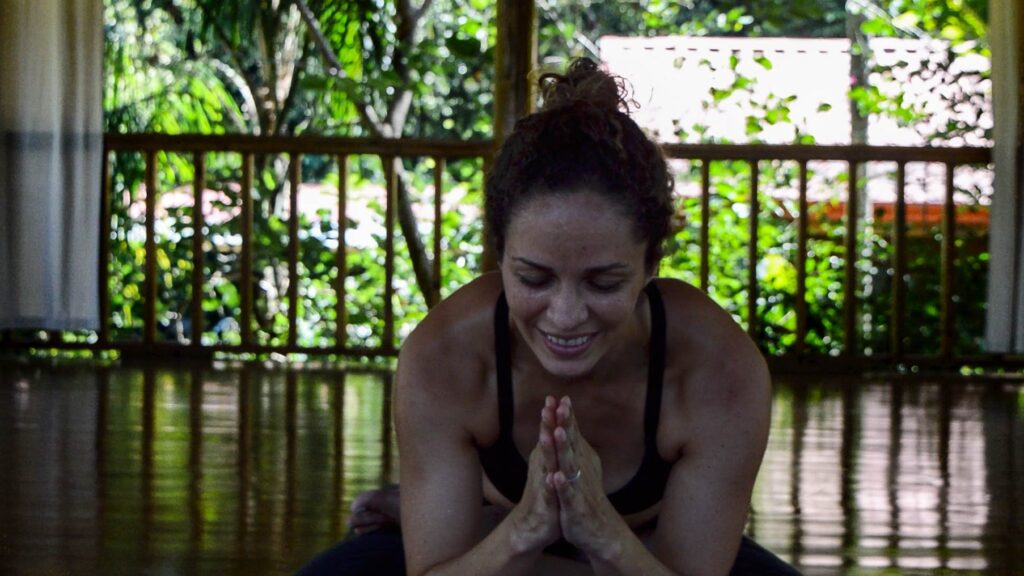The History of Asana
Asana is the third limb of the eightfold path of Ashtanga and the practice most people think of when they hear the word “yoga.” Only a tiny part of Patanjali’s Yoga Sutras is dedicated to Asanas, or physical postures, but is the most common form of yoga practiced today. According to the Sutras, only 11 seated postures were meant to support meditation and deep breathing.
In the 15th century, another text added standing postures to the asana practice. Hatha Yoga Pradipika was the first text to detail the Hatha branch of yoga, which is more closely aligned with modern yoga. It includes a wide variety of seated and standing postures.
Vinyasa Yoga was developed in the early 20th century by Tirumalai Krishnamacharya, an Indian yoga teacher and scholar. Vinyasa is a branch of yoga that links postures in a particular order (Krama) and combines this sequence with a slow and steady breath.
Krishnamacharya also studied Ayurveda — a natural system of medicine that utilizes a holistic approach to treating illness and disease. Many of his students further developed the yoga practice and disseminated it throughout the modern world.
These teachers include B. K. S. Iyengar, founder of Iyengar Yoga, Sri K. Pattabhi Jois, who created a more dynamic and vigorous practice known as Ashtanga Vinyasa, and T. K. V. Desikachar, the son of Krishnamacharya who created the system of Viniyoga.
As these new styles became popular in the Western world, even more yoga methods and techniques, including Power Yoga and Vinyasa Flow, began to branch out.

The Benefits of Asana Practice
The Asana yoga practice aims to prepare the body for meditation and deep breathing. The physical postures should always be stable and comfortable.
When Asanas are performed correctly, the practice also contributes to mental strength, stamina, and stress tolerance. Maintaining a steady breath during physical postures creates a calmness in the mind and elevates the practice from physical exercise to a moving meditation.
The benefits of practicing Asanas are better balance and alignment in the body, increased spine flexibility, and enhanced internal organ functioning. It also boosts the respiratory and reproductive systems. The practice contributes to improved concentration, supplying fresh oxygen to the brain and body, and muscular strength.
Yoga, in general, is widely thought of as physical exercise, and it does offer many of the same benefits. Yet for practitioners, the more profound benefit comes from the combination of slow, steady breathing and the holding of postures. It is a moving mediation that offers a version of the flow state.
Asana practice also helps us develop an awareness of our body. This awareness makes us more sensitive to the subtle energies inside the body. Eventually, each posture will tell us something different about the body as we tune in to listen properly.
As we progress in the asana practice, our attention moves from the external form, such as muscles and bones, to its internal form — breathwork, energy, and sensations. It gives us a vehicle to explore our inner world free from the distraction of the mind and external stimulations.
To fully understand Asana practice, we must look at our bodies as a mass of energy. According to Indian spiritual knowledge, the human body contains 92,000 channels of energy, known as “nadis” in Sanskrit. We use the Asana practice to purify these energy pathways and remove blockages.
The body also contains seven “chakras,” energy centers arranged vertically along the body’s central axis. Postural yoga intends to open and align these focal points to allow energy to flow freely within the body.
Yoga Classes and Tutorials by Bodhi Surf + Yoga

Types of Asana — Yoga Postures
Forward Bends: These poses improve the digestive system by stimulating the internal organs, massaging the liver and kidneys, and providing natural traction to decompress the spine. Forward folds also build a strong foundation for the remaining postures since they increase flexibility in the back and legs.
Twisting Postures: These postures improve rotation and overall spine flexibility and increase neck mobility. Twisting poses also improve digestive function and can even help reduce back pain depending on the sources of pain.
Hip Openers: Opening the groin area helps improve circulation and range of motion in the hips and reduces stress on the lower back. Hip opening postures are meant to release blockages and create an energetic shift within the body, as negative emotions can build up in the hips.
Balancing Postures: These poses can increase concentration and focus. They tone the core muscles, improving spinal alignment and good posture. Balancing postures enhances concentration and the mind-body connection and is integral to improving balance for daily activities, including surfing.

Backbends: These are more advanced postures that work deep into the nervous system, which benefits our mental and emotional states. Backbends also increase strength in the deep muscles of the core and bring the spine into a more neutral position. Backbends are crucial for counteracting the hours of sitting hunched over technology, driving in cars, or watching TV.
Inversions: Inversions are any pose with a lower head than the heart. They are highly valued for their brain-oxygenating effect, which can improve concentration and the capacity to meditate effectively. They reverse the pull of gravity on the blood flow, strengthening the heart and stimulating the circulatory system. Inversions strengthen the core and can provide natural traction for the neck and spine, reducing lower back pain.
Sun Salutations: In a traditional practice, sun salutations are done at the beginning of the practice. This is because sun salutations warm up nearly every muscle in the body. They also improve cardiovascular stimulation and boost energy levels.

Tips for Practicing the Asanas
- The best time to practice is early in the morning or late afternoon.
- Invest in a comfortable, thick, non-slip mat, and bring protection for the knees if necessary.
- Try to practice on an empty stomach or 1-2 hours after eating. Make sure to hydrate.
- It is best to practice on a flat surface in a clean and quiet space with good lighting and ventilation.
- Yoga is always practiced barefoot.
- It is a good idea to shower before practicing to relax and prepare the muscles.
- Avoid using perfume, essential oil, or body lotion during the practice.
- All movement is done with the lips sealed, breathing in and out through the nose.
- Bring blocks, straps, or pillows to help your practice feel stable while holding the postures. Poses should be strenuous but allow for the free movement of the breath.
- Go at your own pace and listen to what feels suitable for your body. Asana practice can be difficult but should never be painful.
- The goal of the poses is to find ease of the breath. Focus on your breathing

Consider Starting Your Own Asana Practice
Starting your own Asana yoga practice doesn’t need to be advanced, complex, or even lengthy for you to reap its many benefits. A simple practice of just ten postures done with deep breathing can go a long way.
The original intent of the asana practice was to keep the body healthy, increase longevity, and prepare the body and mind for extended periods of seated meditation. The intent was not to use asana as a means of rigorous exercise in the Western standards of fitness and beauty.
Beginner Yoga Classes by Bodhi Surf + Yoga
Over time yoga has changed and adapted to suit the needs of modern-day society, but even today, the purpose remains. Yoga is not about improving our external form but about having an internal experience. During this internal journey, we may also achieve some level of physical mastery — not to feed the Ego but to explore the limitations and boundaries of the mind.
We must learn to enjoy this process without focusing too much on our expectations or the result. This practice is about devoting energy and attention to cultivating mindfulness, grace, steadiness, and ease in our innermost being.

Your Journey Starts Here
Ready to Finally Experience That Life-Changing Surf + Yoga Trip (Without the Overwhelm)?
Bust the 5 biggest myths about going to a surf and yoga camp so you can stop procrastinating and start catching waves - with our FREE 5-day email course.
Change the heading on the Separator tab ->
Search
Get a Toolkit to Create Calm in Your Inbox
Watch the first lesson from our full immersive course: 8 Limbs of Ashtanga Yoga, FREE!
Change the heading on the Separator tab ->
Most Read Blogs
What is the Meaning of Anjali Mudra?
May 27, 2020
Fitness for Surfers: Workouts, Exercises & Training
February 10, 2022
The Best Places to Eat in Uvita, Costa Rica
May 19, 2022
How to Get From SJO to Costa Ballena, Costa Rica
May 31, 2018
Change the heading on the Separator tab ->
Categories
Categories
- Bodysurfing (5)
- Food (8)
- Responsible Business (6)
- Surfing (66)
- Travel (65)
- Yoga (44)
Change the heading on the Separator tab ->
Newsletter
Thanks for subscribing! Please check your email for further instructions.
Change the heading on the Separator tab ->
Follow Us
Carly Stoenner
Change the heading on the Separator tab ->
Read more
Ayurveda Series – Cooking with Prana
Words by Pilar
Welcome back! We’re thrilled that you’ve decided to join us as we dive into our third blog in Pilar’s discovering Ayurveda series – Cooking with Prana. Just to jog your memory, Pilar…
Agni – Ayurveda’s Most Vital and Dynamic Principle
Words by Pilar
What if we told you that you could change your life by reading just one blog post? While that might be a bit far fetched, we’re convinced that we could all benefit…
Intro to Ayurveda: Pilar’s Exploration into the Ancient Science of Longevity
Words by Pilar
If you’ve visited us recently and spent time with Pilar specifically — whether on the yoga mat or over breakfast, you’ve likely heard her mention the word “Ayurveda” multiple times. That’s no…



